9 Types of Cactus to Bring Beauty & Interest Into Your Home
Author: Jen Worst | Editor: Omar Alonso
Review & Research: Jen Worst & Chris Miller

Browsing the numerous types of cactus plants that you could have in your home can be such an inspiring experience. You get to see what’s available, and choose the types of cacti that will look best in your home.
There are so many different cactus types to choose from if you’re in the market for a new plant, or perhaps you’re trying to identify one that you already have? In any case, here are some popular (and some more unique) options to browse through, along with some useful information.
There are so many different types, so I can’t possibly include all of the cactus types here, but I’m going to feature many different types of cactus. Enjoy!
Popular Types of Cactus Plants
Here are some of the more common types of cacti. When I purchased my first cactus, it didn’t have a label so I found myself wondering what kind of cactus do I have?
I found a list that showed 5 to 10, and mine was right there - so, I figured it would be useful to compile something similar and updated. The word “cactus” is a large umbrella that contains many types, so here’s a look at some cactus lower classifications.
Prickly Pear
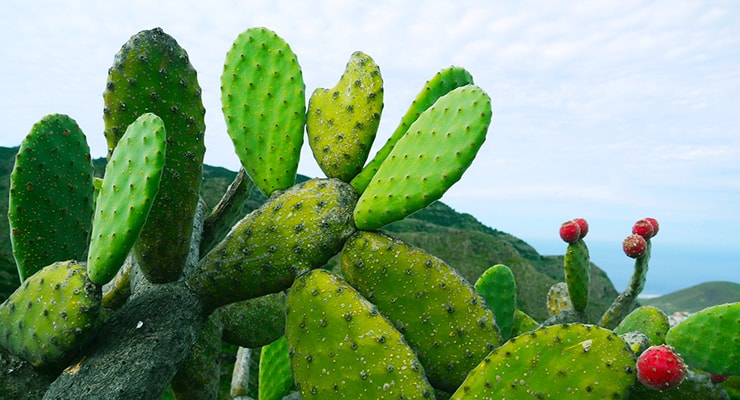
Prickly Pear is the common name for the Opuntia genus. Different types of prickly pear can combine to create hybrids, so there are dozens of varieties that you may come across if you show up at a nursery and simply ask for “prickly pear”.
That’s the case with many cactus types; as you continue to dig, you’ll learn how much variety there is. But to keep things simple, prickly pears are known for their bright-color fruits/flowers that bloom from them, the flat prickly pads that are somewhat pear-shaped, hence the name. Certain types (the Indian fig opuntia, for instance) are used in cuisine.
Saguaro Cactus
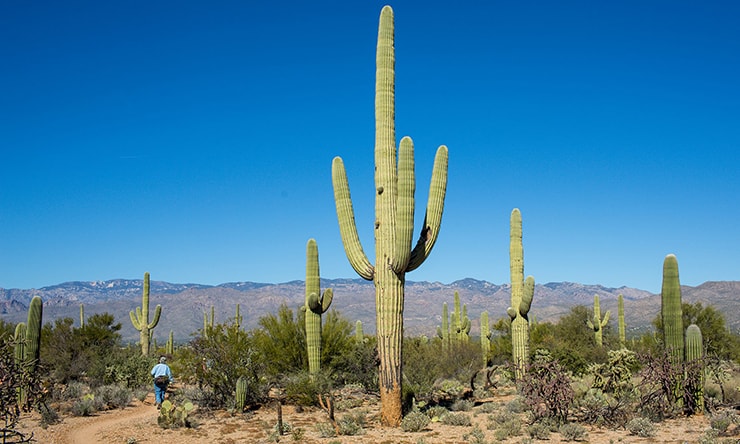
The Saguaro may be one of the most iconic types of cactus. It can grow to around 40 feet tall, and it basically just “looks like a cactus”, like if you asked a child to draw a cactus, there’s a very strong chance that they’ll be drawing a Saguaro or something very similar.
This type of cactus has been described as the “universal symbol of the American West.” Saguaro National Park in Arizona is home to the largest example of this plant in America, and it’s truly a sight to behold if you ever have the opportunity.
Per conservationists, the status of this plant’s safety is rated “least concern” on their scale, in other words it’s not high up on the list of species that are in trouble, it’s a common plant that is doing relatively well overall. Being a fairly common cactus, it’s resilient and can survive in less-than-ideal conditions.
San Pedro Cactus
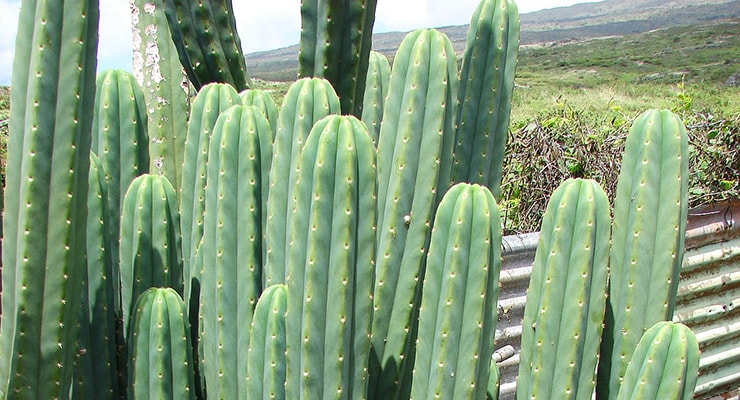
San Pedro is the common name for the Echinopsis pachanoi cactus. Like the Saguaro, this is another iconic type of cactus. It grows tall with several cylindrical forms attached to the main base of the plant.
The San Pedro is native to the Andes Mountains, where it grows successfully at around 7,000 to 10,000 feet of elevation. This cactus has been used traditionally in a variety of forms of Andean medicine, even after Spanish colonists tried to suppress its use.
In America, you’ll find San Pedro growing naturally in hardiness zones 8b to 10. It can be grown through propagation, too, by cutting off one of the columns and laying them flat on the ground until roots start to appear, then it can be placed upright into the ground to continue growing.
It’s a clone of the parent-plant that the cutting was taken from, and will then produce its own columns and grow into a full cactus, at which point it can be further propagated to continue yet another generation.
Barbary Fig Cactus
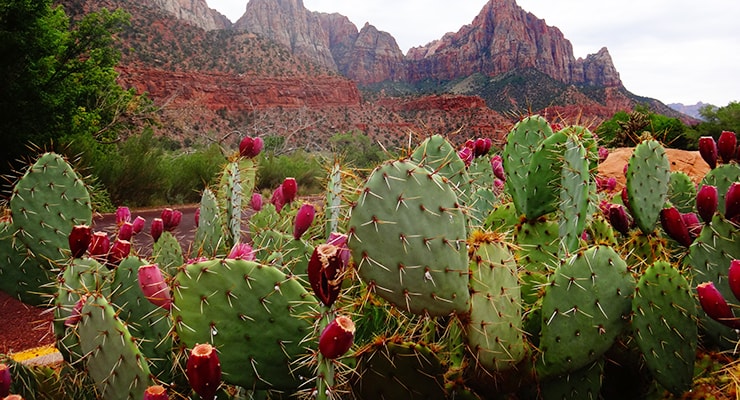
The Barbary Fig cactus, Opuntia ficus-indica (not one of the types of ficus despite the name), can grow to be roughly six feet, all the way up to fifteen or sixteen feet tall. That’s quite a bit smaller than the Saguaro which can reach 40 feet, but still large enough to dwarf most humans, even among Barbary Figs that don’t reach their full height-potential.
This cactus is used in medicine for its astringent properties, and skincare as a moisturizer. Some people will make infusions with it to drink. Some people pass around recipes about how to turn this cactus into a jelly to eat.
Drinking a cactus isn’t at the top of my list of things to do, but to each their own. I’m more inclined to spread it on a piece of toast as a jelly, but I’ll stick with strawberries for now. This plant isn’t related to a fig tree at all, even though the name may suggest otherwise.
Hedgehog Cactus
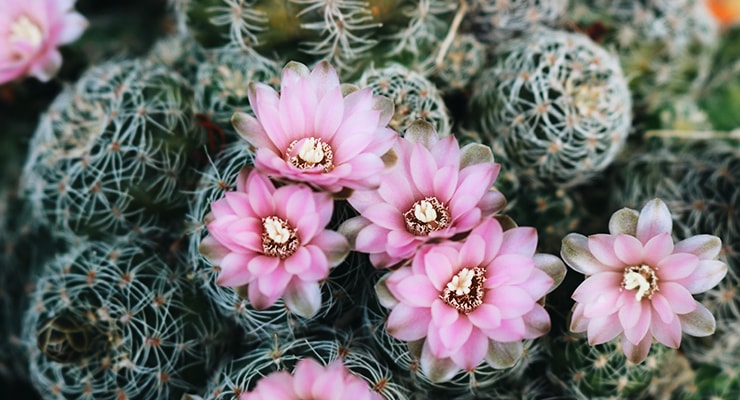
Hedgehog is the common name for the Echinocereus engelmannii, and frankly I’ll stick with hedgehog because it’s a heck of a lot easier to say, not to mention to spell. This little fellow is a lot smaller than the other cacti we’ve looked at thus far, it’s probably the most practical to keep in your yard or your home.
Assuming it’s not super-rare, smaller cacti are also a lot more affordable in most cases. This cactus is named after George Engelmann (engelmannii), a botanist who is responsible for identifying over 100 types of cacti. Don’t be jealous, if you discover a cactus you can have it named after you, too.
Peyote Cactus
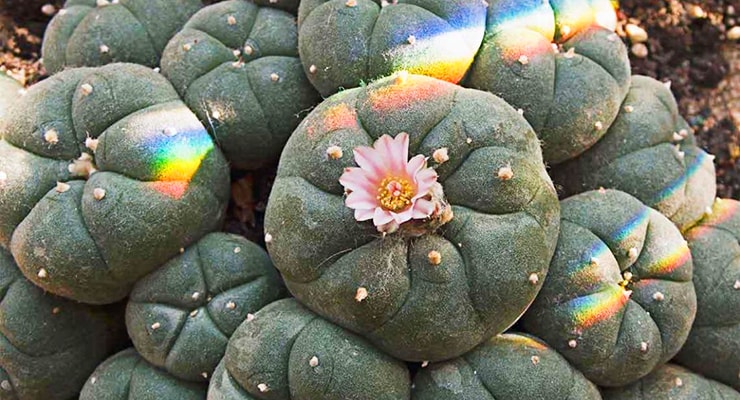
This lumpy looking little cactus is popular for more than just it’s cute appearance, but also as a key ingredient in many spiritual rituals around the world. Ingredients derived from the peyote cactus are illegal in parts of the world, for instance Canada, and America if they’re used for their narcotic purposes.
However, Peyote is also exempt from certain drug laws, when used in a “non-drug” fashion. Here’s an excerpt from Wikipedia that explains this further:
“Following the passage of the American Indian Religious Freedom Act Amendments of 1994, United States federal law (and many state laws) protects the harvest, possession, consumption and cultivation of peyote as part of "bona fide religious ceremonies."
Golden Barrel Cactus
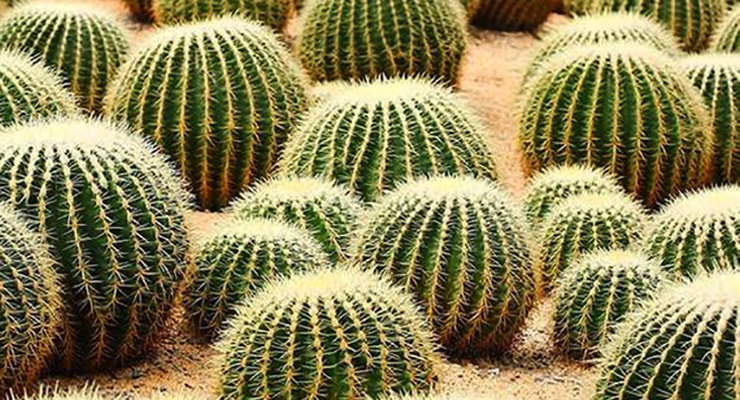
The Golden Barrel cactus, or Echinocactus grusonii, is a shorter cactus that likes to stay closer to the ground. It looks like a ball, but I don’t recommend throwing it, or even kicking it for that matter, since it’s very prickly like most cacti.
It has another more folksy name that it’ll sometimes be referred to as, which is “mother-in-law’s cushion”. You can make of that what you will. As for the conservation status, it’s right in the middle of the scale and marked as “endangered.” You can help by growing your own barrel cactus types.
It’s not extinct, and it’s not right on the verge of extinction, but the trend is heading in the wrong direction and it is at a greater risk than certain other types of cacti, so if you see one of these in the wild, the best thing you can do is to just leave it alone.
Sometimes, people like to dig up a rare cactus to have in their own yard or collection, but make sure you’re well-aware of any laws or regulations and protections that could prevent that, and please respect them.
Schlumbergera Cactus
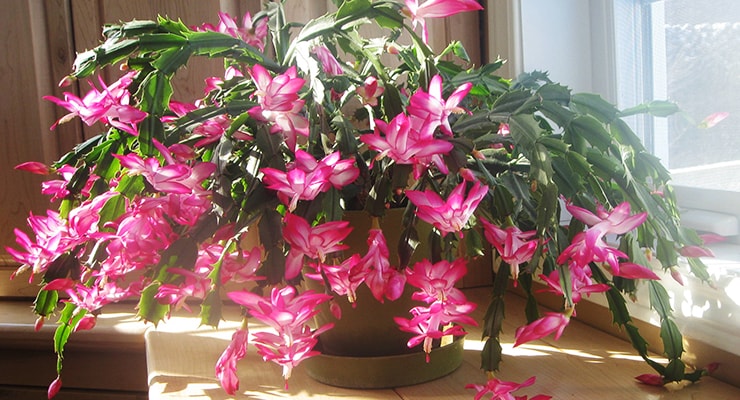
This little cactus grouping contains very famous ones like the Christmas Cactus and the Thanksgiving Cactus, which are often misidentified but they have some subtle differences that help to tell them apart.
Recently, DNA research has led to the re-classification of a few other types of cactus into this group, but not everybody is on board. That’s a whole other can of worms, though.
In any case, however you want to classify them, the Christmas and Thanksgiving cacti are some of the most popular varieties to find in North America, mainly because they grow very well indoors as houseplants, as long as they’re able to get some sun. Three are a lot of indoor cactus types and this one takes on a more traditional flowering plant shape, so it could be a great entry point into growing them.
Eve’s Pin Cactus
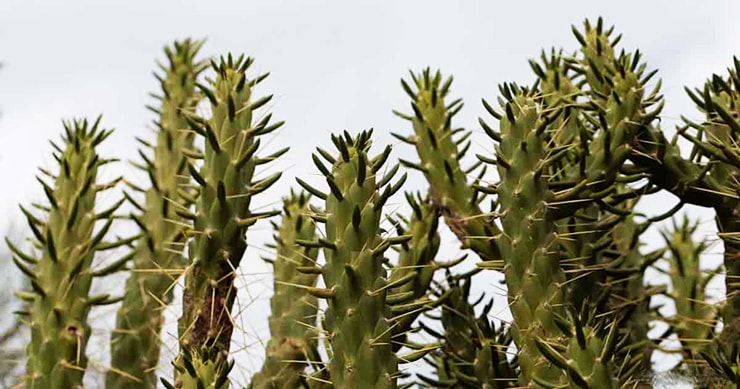
Austrocylindropuntia subulata is the scientific name for Eve’s Pin, which is also sometimes referred to as Eve’s Needle. These start as small little sticks that grow out of the ground, often in groups of several at a time. They have green “thorns” growing out of the side, which are soft, but they also have some small pricklies, too.
It originates from Peru, has showy flowers, and can actually grow to be over a dozen feet tall. This type of cactus is commonly found for sale at Ikea stores, among other places, so if you recognize it, that could be where! Obviously, the ones in Ikea are a lot smaller than you’ll find in the wild.
The Different Types of Cactus: Final Thoughts
I hope that you enjoyed taking a look at some of the unique, or common, or interesting cacti that exist out there for us to appreciate. Having them, growing them, taking care of them, and even killing cacti (I don't have a green thumb) add some enjoyment to our lives.
There are so many different types of cactus plants out there. Whatever you’re looking for, you can probably find it. Some of them get huge, some of them don’t get as large. Some of them are sharp and dangerous, others are less-so.
There are two things you need to be careful about when it comes to the average cactus. First, the prickly thorns that grow out of most of them. Secondly, because it’s an addictive hobby and collection to start, so just make sure you’ve got plenty of room as you fill your world with types of cacti.



